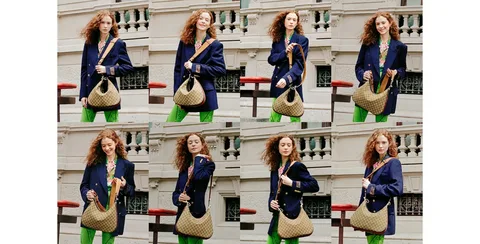Gucci, a name synonymous with luxury and impeccable style, has long been a leader in the world of high fashion. Among its many iconic creations, the gucci bag stands out as a symbol of elegance and craftsmanship. Tracing the history of these coveted accessories reveals a fascinating journey — one that reflects broader trends in fashion and culture. In this article, we explore The Evolution of the Gucci Bag: A Timeline of Timeless Design that has captivated generations.
Early Beginnings: From Craftsmanship to Luxury
The story begins in 1921 when Guccio Gucci founded the House of Gucci in Florence, Italy. Initially, the brand was known for leather goods and luggage inspired by the refined tastes of wealthy travelers. The early Gucci bags were handcrafted with an emphasis on quality materials such as leather and canvas, featuring simple yet elegant designs.
This era laid the groundwork for what would become the defining elements of Gucci bags: impeccable craftsmanship, durability, and subtle luxury. The famous green-red-green web stripe first appeared during this time, a design motif that remains synonymous with Gucci to this day.
The Iconic GG Logo and the Rise of Designer Status
Moving into the mid-20th century, the Gucci bag entered a new phase of evolution. The introduction of the interlocking double G logo in the 1960s marked a turning point. It transformed the bag from a practical accessory to a status symbol that celebrities and socialites proudly showcased.
Throughout the 1970s and 1980s, Gucci bags became increasingly bold in their designs, featuring exotic materials such as python and ostrich skin. This period saw the launch of iconic models like the Jackie bag, named after Jacqueline Kennedy Onassis, cementing Gucci’s position as a cultural and fashion powerhouse.
Modern Innovations and Revivals
The evolution of the Gucci bag didn’t stop there. The late 1990s and early 2000s saw a dip in popularity, but with the arrival of creative directors like Tom Ford and later Alessandro Michele, Gucci experienced a dramatic revival. Today’s Gucci bags are a vibrant mix of retro inspiration and contemporary flair, embracing both maximalism and sustainability.
Alessandro Michele’s tenure, in particular, introduced playful embellishments, bold prints, and reimagined classics, appealing to a younger, fashion-forward audience. Models like the Dionysus and the Marmont have become new icons, illustrating The Evolution of the Gucci Bag: A Timeline of Timeless Design with fresh creativity while respecting its storied past.
Why Gucci Bags Remain Timeless
What makes Gucci bags truly timeless is their ability to evolve without losing their essence. From humble beginnings to the runway of global fashion weeks, these bags have adapted to changing tastes while retaining their luxurious heritage.
The careful balance between innovation and tradition explains why collectors and fashion enthusiasts continually seek out Gucci bags. Whether it’s the classic bamboo-handle bag or a modern quilted leather piece, each design tells part of the story of Gucci’s relentless pursuit of perfection.
In conclusion, understanding The Evolution of the Gucci Bag: A Timeline of Timeless Design offers a glimpse into how a brand can maintain relevance across decades. Gucci’s unwavering commitment to quality, paired with daring creativity, ensures that every bag is not just a fashion accessory but a piece of history.


